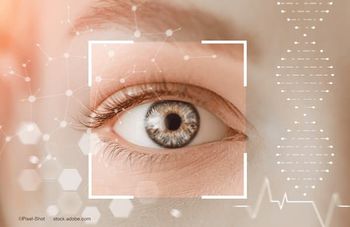
Combination glaucoma therapy by drug-eluting lenses
In this article, the authors present their recent findings on drug-eluting, extended-wear contact lenses for glaucoma and discuss how these lenses may provide week-long IOP reduction with just one day of wear.
Take-home message: In this article, the authors present their recent findings on drug-eluting, extended-wear contact lenses for glaucoma and discuss how these lenses may provide week-long IOP reduction with just one day of wear.
By Anuj Chauhan, PhD and Kuan-Hui Hsu
Improving drug transport
To overcome all the limitations of eye drops, Dr Chauhan and his team are working towards designing drug-eluting extended wear contact lenses for glaucoma therapy.
It is noted that other devices for glaucoma therapy such as fornix inserts or puncta plugs cannot be as effective as contacts for delivering drugs across the cornea because a large fraction of the drug released by these device will likely diffuse into the conjunctiva.
The history of drug-eluting lenses
Contact lenses were explored for glaucoma therapy as early as in 1970s primarily by loading pilocarpine through soaking the lens in the drug solution.7,8 This approach was shown to be effective but it did not reach clinical stage mainly because the lenses released the drugs in a burst. Even today’s commercial contact lenses are not suitable for delivering ophthalmic drugs due to a burst release in an hour, which could increase the potential for toxicity and require insertion of multiple lenses each day.9 We have designed a novel approach of achieving extended drug release for glaucoma therapy by incorporating vitamin E ((+)-α-tocopherol) into silicone-hydrogel contact lenses.10
Increasing release duration with vitamin E
Vitamin E increases the release duration by acting as a barrier for drug transport, forcing the molecules to diffuse out in a tortuous path (Figure 2), and leading to an increase in release duration. We have shown that vitamin E incorporation can significantly increase the release duration of many hydrophilic drugs including timolol, dorzolamide, dexamethasone phosphate, fluconazole, betaine, cysteamine, levofloxacin; and many hydrophobic drugs including dexamethasone and cyclosporine.5 Since vitamin E acts as an effective barrier for multiple drugs, it is possible to achieve extended release of multiple drugs loaded in the same lens. This allows delivery of combination therapy by contact lenses. For example, release durations of timolol and dorzolamide increase from few hours to 50-hours when 20% (w/w) vitamin E is incorporated into the lenses.11
Vitamin E loaded commercial contact lenses are transparent for loadings as high as 70% (w/w), though we load only about 20% in the in vitro and in vivo studies (Figure 3).10 The vitamin E loaded silicone-hydrogel lenses remain highly permeable to oxygen and show improved UV blocking, reduced water evaporation and modulus, all of which are desirable changes.10 The therapeutic effect and safety of the lenses was also evaluated in multiple studies in a primary open angle glaucoma model in Beagle dogs.12, 13
Previous studies
In a recent study11, ACUVUE® OASYS® lenses were loaded with 20% (w/w) vitamin E, 670 microgram timolol and 200 microgram dorzolamide; similarly, each eye drop of Cosopt® contains 670 microgram timolol and 200 microgram dorzolamide but the administered dose is twice per day. The vitamin E and drugs loaded lens was placed in a randomly chosen eye of 10 Beagle dogs, with the other eye as control. The lens was kept in place for 2 days, and then replaced by an identical lens, which was removed after 2 days. After the first four days, the dogs were not given any further medications. The IOP measurements in the control and the treated groups are shown in Figure 4 for 12 days. The IOP in the treated eye remains significantly lower than the control eye for the entire 12-day duration even though the drug delivery was stopped after 4 days. We attribute this to creation of depots in the eyes due to continuous exposure of the cornea to the drug for 4 days.
We hypothesise that the depots are created due to the slow transcellular transport of the drug that causes an accumulation of the drugs in the corneal epithelium. When ophthalmic drugs are delivered via eye drops, the residence time is far too short for drugs to partition into the epithelium cells, and so the only transport pathway is through the tight junctions in between the cells. In presence of vitamin E loaded contact lenses, the continuous release for 4 days allows significant drug accumulation inside the epithelium cells. After the lenses are removed, the accumulated drug can then diffuse out and that process would also take a long time of 4-7 days, which could lead to the prolonger IOP reduction. While this hypothesis appears to be plausible, further studies are needed to prove its validity. The mean IOP difference between the treated and the control group was 5.22 mmHg.
A similar study using Cosopt® eye drops b.i.d. showed that the mean IOP difference was only 2.66 mmHg and the IOP in the treated eye returned to baseline within a day after cessation of drug delivery.11 Eye drops are unable to create the depots due to the short residence time of only a few min in the tears. Thus, this study showed that the drug-eluting lenses can significantly reduce the IOP comparable to b.i.d. delivery of eye drops, even though the lenses were loaded with only about one eleventh of the drug loaded in eye drops in the entire 12-day animal study. There was no discomfort or ocular toxicity from lenses with or without vitamin E. These and other studies show that vitamin E modified lenses are promising for extended multidrug delivery which may greatly improve therapeutic effect and patient compliance.
The future of glaucoma management?
Based on the results of our study, we believe that it may be possible to design a contact lens that can achieve IOP reduction for about a week with just a day of wear. These exciting results suggest that human studies are warranted to further explore the potential of glaucoma therapy by vitamin E loaded lenses.
While these results are very exciting, several hurdles remain for commercialisation including regulatory approval, determining the appropriate sales channels, increase in costs, physician and patient acceptance, etc. Patient acceptance may be a critical issue because a large fraction of the glaucoma patients are elderly. This may be a potential drawback limiting the number of glaucoma patients that can benefit from drug-eluting contact lenses, but the approach appears to hold promise considering the benefits of improved bioavailability and compliance, along with the possibility of extended IOP reduction beyond the wear time. Also, the latest advances in contact lens design are improving the comfort, which may lead to higher lens acceptance in the elderly.
References
- H.A. Quigley and A.T. Broman. Brit. J. Ophthalmol. 2006; 90 : 262-267.
- S. Resnikoff et al. Global data on visual impairment in the year 2002. B. World Health Organ. 2004; 82: 844-851.
- A.L. Robin et al. Am. J. Ophthalmol. 2007; 144 : 533-540. e2.
- C.C. Li and A. Chauhan. Ind. Eng. Chem. Res. 2006; 45 : 3718-3734.
- K-H. Hsu et al. J. Drug Deliv. Sci. Tec. 2014; 24 : 123-135.
- S.R. Waltman and H.E. Kaufman. Invest. Ophth. Vis. Sci. 1970; 9 : 250-255.
- J. Hillman et al. T. Ophthal Soc. UK. 1975; 95 : 79-84.
- J.S. Hillman. Brit. J. Ophthalmol. 1974; 58 : 674-679.
- C.C.S. Karlgard et al. Int. J. Pharm. 2003; 257 : 141-151.
- C.C. Peng et al. Biomaterials. 2010; 31 : 4032-4047.
- K-H. Hsu et al. Eur. J. Pharm. Biopharm. 2015; 94 : 312-321.
- C-C. Peng et al. J. Control. Release. 2012; 162 : 152-158.
- C-C. Peng et al. Curr. Eye Res. 2012; 37 (3): 204-211.
Dr Anuj Chauhan and Kuan-Hui Hsu
Dr Chauhan is Professor and Associate Chair of the Department of Chemical Engineering, University of Florida, Gainesville, USA. Kuan-Hui Hsu is a PhD student at the same department and is anticipated to graduate in August 2015.
Dr Chauhan has an issued patent US8404265 B2 based on the technology of vitamin E incorporation in contact lenses.
Newsletter
Don’t miss out—get Ophthalmology Times updates on the latest clinical advancements and expert interviews, straight to your inbox.








































